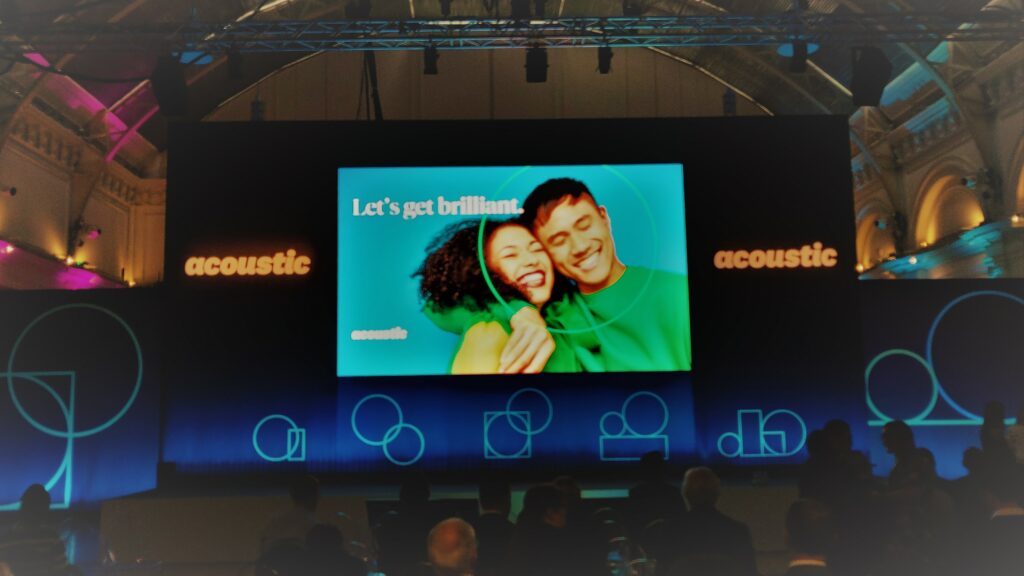Marketing Automation – A Practical Approach
(Part 2)
Marketing Automation – a practical approach (part 2) will look more deeply at some of the aspects that were covered in part 1 of this series of articles looking at Marketing Automation, where we looked at a high-level view of the components that you will need to consider as part of your Marketing Automation journey. This time around we will try to arrive at a practical definition for Marketing Automation.
The Customer – The assumption here is that we all realise that putting the customer at the centre of your marketing activities is very important and no more so when automating. We want to remove the friction through a customer experience so careful consideration needs to be taken to ensure that customers do not get caught between multiple journeys so start to feel like cogwheels in the machine. You may have ideas about what your customer entry and exit points into the various journeys may be. Your customers may decide they have their own so think about all circumstances that could lead you to change a customer onto a different track. You may also decide that there are points where a customer should be removed entirely from automated processes and dealt with more personally and reinserted later. These could include the good cases such as VIP or high value product sales that you wish to protect, or the bad, such as fraud investigation. You can also use automation to break a process into smaller steps, collecting customer profile data in manageable chunks to increase journey completion rates for example.
Software and system processing – Obviously having a well-connected, easy to use and seamless technical solution is the ideal and there are many on offer. Whichever you use, you will need to understand and work with technical limitations. What options for example, are available for capturing your SMS responses (2-way, landing pages etc)? Identify the processes that can be automated now or what work is involved in automating the remainder. You may have to deal with manual parts of the process in the first instance but can use these intermediate results to justify further investment. Which parts of the process give the greatest benefit (time, de-risking, cost) and think about limitations around frequency, volume and functional capability. Depending on your organisation you may never be able to fully automate a process, e.g. Approval gates.Typical systems and software considerations will include:
Datamart population – ensuring data is up to date for further selection. What happens when these processes fail? How easy is it to restart a stalled customer journey?
Triggers for entry gates into customer journeys
Availability of data to identify exit points from customer journeys which in turn can be entry points to new journeys
Audience creation – who do you wish to contact
Transferring of data to/from channel providers (with enough information for them to know when to send)
Capture of contact points into data repository
Capture of customer response into data repository
- Deliverability at the channel (did they see the message)
- Response at the channel (did they open or click on anything
- Response post-channel which is always the most difficult to capture as it potentially involves many more systems
- (Did they order a product or sign up for a service)
- Capture of customer behaviour into data repository
- Preference Centre and opt-outs
- Scheduler(s) – the clocks that keep the processes ticking
Reporting – the creation and distribution of data to allow decision makers to decide how current campaigns are working and what should be done to improve them. Important in the early stages of automation to justify investment in the program.
Notifications – to allow support teams to know that things are working well or otherwise.
Version Control – to allow existing journeys to play out while new versions are implemented.
Marketing Program – Your Marketing Program needs to take into account the various journeys a customer can undertake. What levels of parallelism do they afford? When should a customer enter the journey and at what points do they exit? What happens when they exit?
Think about the different types of activities including one-off fixed-point contacts (Birthday mailings, policy renewal etc) or entire customer life-stage (New customer onboarding to involve take up of a number of products and services). One approach is to determine the life stage segment a customer resides in and target any customer journeys to their current segment. Watch out for segment transitions and determine upfront what happens to current journeys a customer occupies. Over the top of this you will have journeys involving transactional processes – a website order, newsletter sign-up, mailbox full resolution etc. An additional layer to consider will be preference centres which will drive contact channels for each customer. These cover your outbound activities, but you also need to cover inbound as well. With the right systems and data stored you can also combine the two. Marketing activities can be added to a prioritised queue and depending on the channel, the top few can be scooped from the pile and presented to the customer when they visit your branch, call centre or ATM. Systems should be aligned so that however you are talking to a customer, the look and feel of a message is consistent.
Areas to consider:
Set prioritised goals for automation.
Create connected journeys across all customer touch points (A 360-degree view).
Different customer life-stages and the need to consider that at any time, a customer may be in any of these:
- Prospect acquisition (steady flow of leads)
- Nurture Prospects (more expensive) to turn into Leads
- Welcome journey for new customers
- Manage and grow your established customers (customer engagement)
- Special treatment for advocates
- Manage retention for disengaged customers
- Re-engagement to win-back lost customers when the time is right
Data Privacy rules.
Fragmentation of data for higher frequency runs. Sometimes this is desirable, other times a problem.
Timeliness of selection to contact when most relevant.
Send time optimisation and identification of the optimal time to contact a customer.
Ongoing evolution of the process through A/B testing for example. Build your process frameworks to allow flexibility and comparison with ease of update to promote the winning formula at any time.
Seed lists, test sends and notifications to monitor automated output both internally and externally.
Control groups and fallow lists to ensure that you know you’re on the right track.
Separation of non-campaign specific processes to generic flows to save on build and test time. Examples are bounce programs to identify and fix the cause of non-sends via alternate channels. Consider the impact to a customer of missed contacts or extended exclusion from a journey.
Start small and scale as required.
Business Processes – Marketing Automation has the potential to impact many areas of your business. It is one of the reasons why we do not consider it to be solved solely by a single software solution and can require careful thought. First the good news is that as you implement good MA practices you will start to see efficiencies in many areas. These can then be used to focus on the high value items on your company to-do lists that never seem to be reached due to always trying to get the latest campaign out.
A major area here is around how you work with your business partners. MA can be used to deliver a steady stream of target contacts to your CSAs, hopefully with less upfront effort. The usual communication streams you have with these agencies and partners will also need to be updated to allow an understanding of when outputs are going to be delivered, approval mechanisms and what happens when processes do not work as expected from both sides. It is also usual at this point to find some processes that cannot be automated. Consideration is then needed to handle the change of pace from automated to manual (and potentially back again).
One of the potential savings will be around approval and testing of process but this can introduce a new concern around complacency. It’s not unheard of to think that everything is running just fine to find out that no contacts have been made for some time. The lights might be out but it’s good to shine a torch in there occasionally!
To keep the experience fresh from a customer’s viewpoint you will also need to ensure that your content providers are keeping things up to date. This content will need to be adaptable to improvements in personalisation and new approaches you may wish to take.
Conclusions – It is not a journey to be undertaken lightly. The right software platform(s) will help enormously but you will normally encounter functional shortfalls somewhere along the line and require enhancement. The rewards however can often be great. Watching the daily grind disappear from a team’s activity calendar with the realisation that the individuals on the team can finally start to tackle some of the more interesting projects on their elusive to-do list will be rewarding in terms of ROI and job satisfaction / staff retention.
So, what is Marketing Automation? Perhaps “A technically-lead approach to minimising manual processes in contact and dealing with the needs of your customers and prospects by pulling together multiple areas of your business and partner network”.
Interested in hearing how our experiences can help with your Marketing Automation challenges? Please get in touch.
Also, if you are a Unica customer watch this space as we introduce a series of articles looking in more technical detail at various aspects of Marketing Automation in your world. Topics will include:
- Design
- Scheduling
- Data
- Build
- Contact and Response
If you would like to read in more detail about the Unica solution you can read our blog `The HCL Unica Suite‘
Like what you see?
Subscribe to our newsletter for customer experience thought leadership and marketing tips and tricks.




